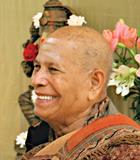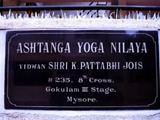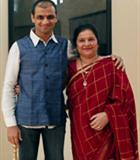The Practice
The Sanskrit word yoga means to "unite", and is a common term that describes a physical, mental and spiritual discipline. Ashtanga yoga is a traditional system developed by Sri K. Pattabhi Jois (Guruji) and taught by a lineage of teachers all over the world. The term Ashtanga literally means 8 (Ashtau) limbs (anga), and refers to 8 steps that are practiced in yoga. Based on the Yoga Sutras of Patanjali, the 8 limbs/steps are:
- Yamas: restraints and morality
- Niyamas : personal observance
- Asana: body postures
- Pranayama: breathing exercises
- Pratyahara: withdrawal of senses
- Dharana : concentration/focus, cultivating inner awareness
- Dhyana: state of meditation
- Samadhi: union/state of oneness/bring into harmony
Yoga asana, or the physical practice of Ashtanga Vinyasa Yoga, involves the synchronization of breath with a progressive series of postures. This method produces internal heat that detoxifies, purifies and cleanses the organs and muscles. This results in improved circulation and helps release toxins from the body. Some of the many benefits of yoga asana are improved flexibility, increased strength and endurance, stress relief and physical pain relief.
The History
Ashtanga yoga dates back thousands of years and has been passed down by generations of sages and teachers. Ashtanga yoga has reached people all over the world through the teachings of Sri K. Pattabhi Jois (1915-2009), the father and Guru of Ashtanga yoga. Sri K. Pattabhi Jois, whose students affectionately called Guruji, was passionate about yoga and Sanskrit studies.
At the age of 12, Guruji attended a lecture and demonstration led by TKV Krishnamacharya. Soon after, Guruji became Krishnamacharya’s devoted student and practiced Ashtanga yoga with him daily. Recognized as the father of modern yoga, Krishnamacharya (1888-1989) was a scholar, a healer and one of the most influential yoga teachers of the 20th century.
Guruji studied yoga under Krishnamacharya’s supervision and various Indian texts including the Patanjali Yoga Darsana and Hatha Yoga Pradipika. He continued his Sanskrit studies at the Sanskrit University of Mysore, where he also taught for 37 years. There, he became the director of the first Yoga department. Guruji established the Ashtanga Yoga Research institute (KPJAYI) at his home in Mysore, India. His teachings attracted members from all walks of the local community including police officials and doctors. Like his Guru before him, Pattabhi Jois received patients seeking treatment for a variety of conditions, including diabetes and blood pressure.
Word spread across boundaries of Sri K. Pattabhi Jois and the practice of Ashtanga yoga. People from all over the world travelled to Mysore to practice in Guruji’s presence. Guruji also travelled to many countries to teach Ashtanga yoga. He taught local and international students at his home with his only daughter Saraswathi and his grandson Sharath until he passed away on May 18th, 2009. His memory will forever remain an example of absolute integrity in the practice of Ashtanga yoga. In honor of his life and legacy, Saraswathi and Sharath continue to teach at KPJAYI in Mysore and overseas. Guruji’s son, Manju Jois, currently lives in the US and travels internationally to teach Ashtanga yoga. The system of Ashtanga Yoga has become a worldwide discipline practiced and taught by thousands of dedicated yogis around the world.



